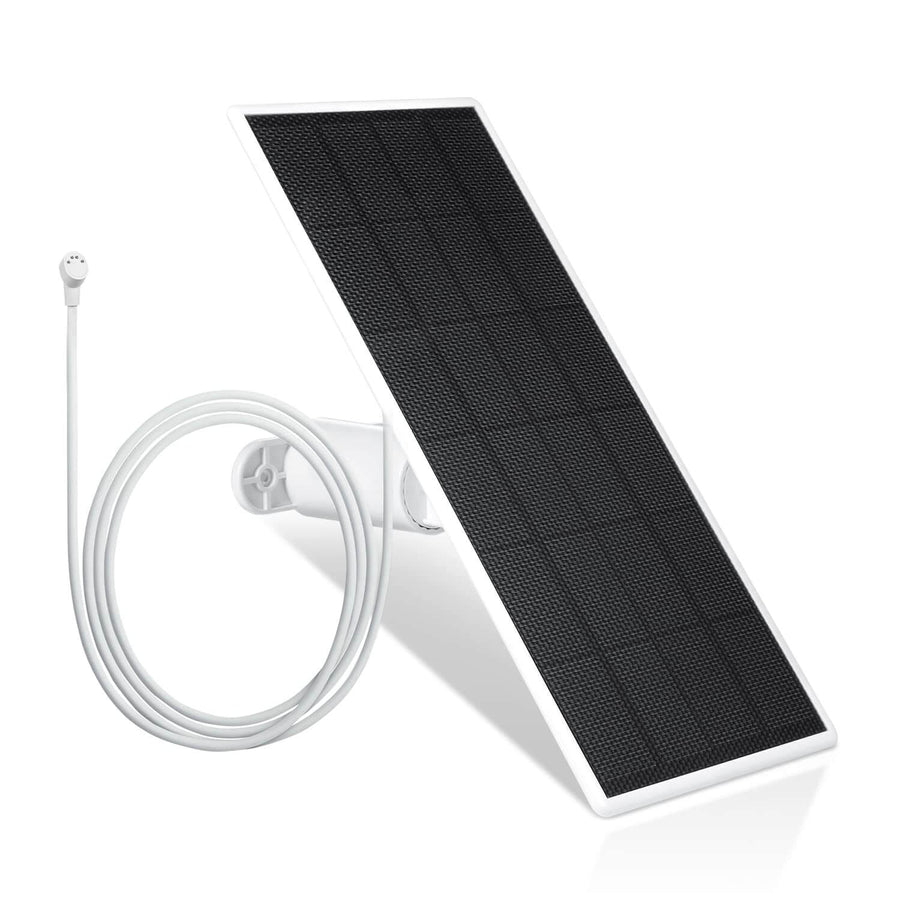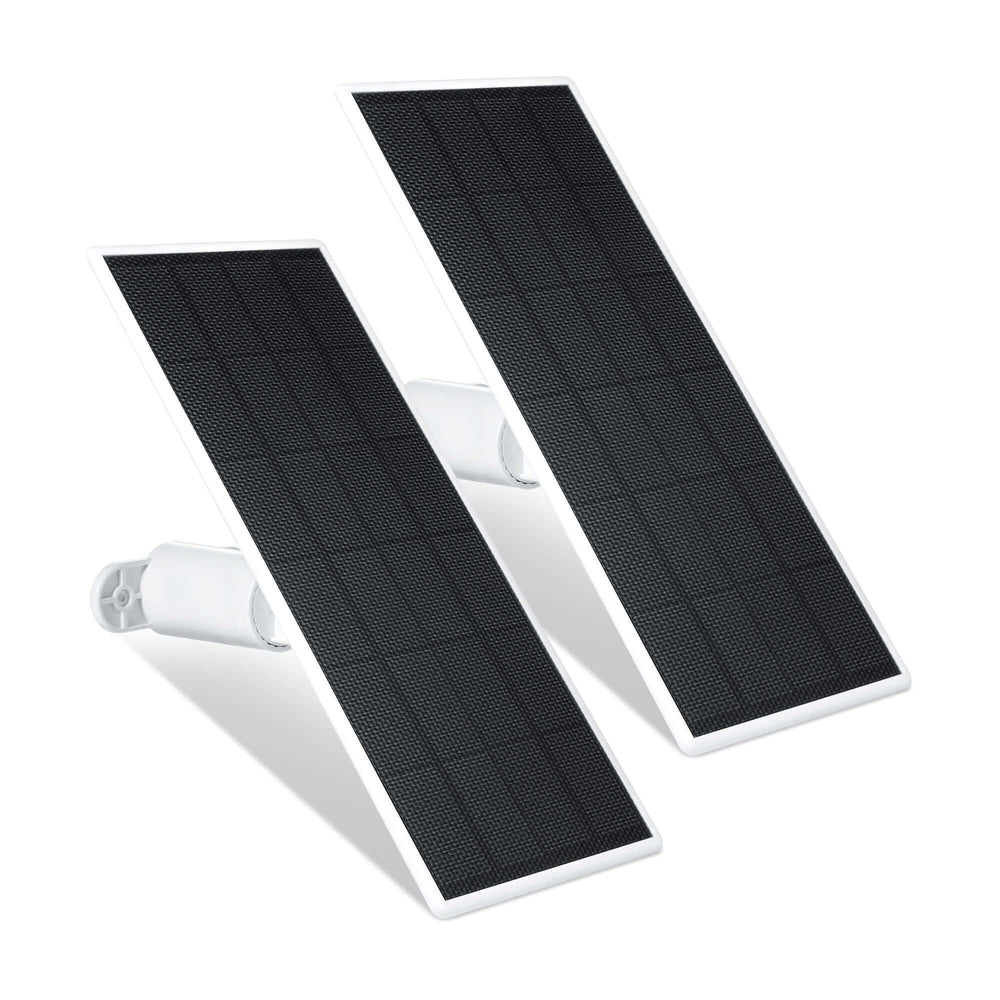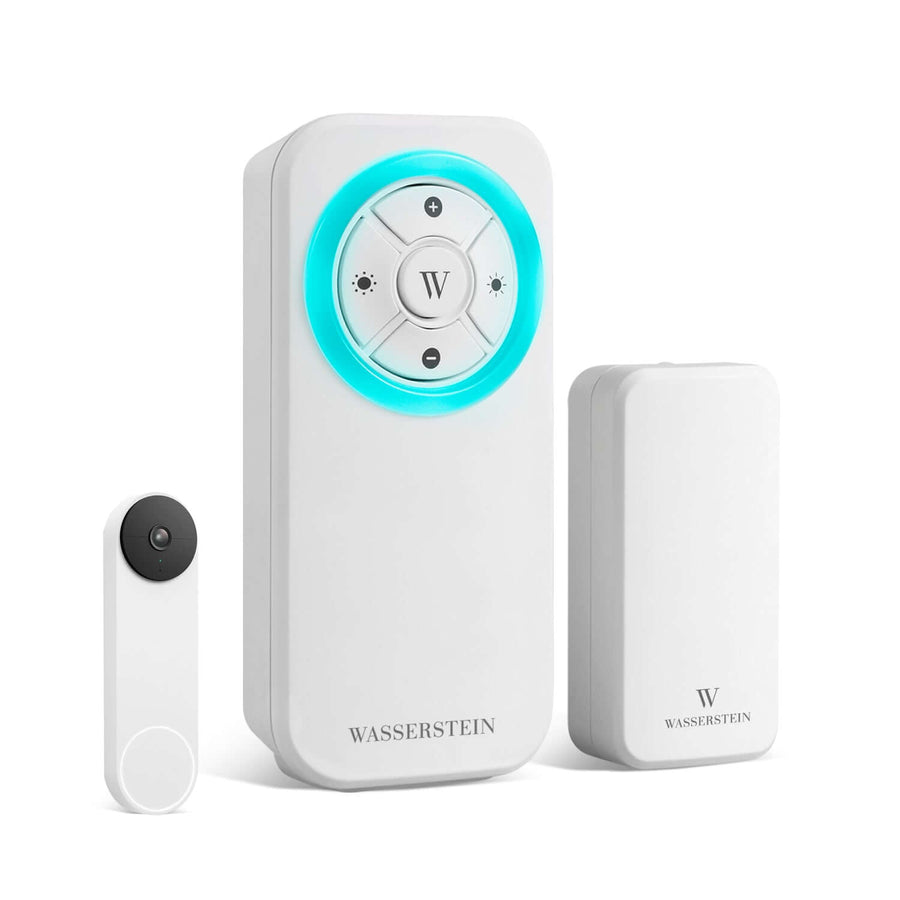Best Spots for Security Camera Placement: A Complete Guide
- Entry Points First: Cover front/back doors, windows, garage—mount at 8–10 ft for clear face shots.
- Right Gear, Right Spot: Weatherproof, night-vision outdoors; discreet, high-res indoors; battery/solar for off-grid.
- Stay Legal: Don’t film neighbors’ private areas or rooms with expected privacy.
- Optimal Angles: Aim cameras slightly downward; avoid glare, glass, and foliage. Trim plants regularly.
- Smart Settings: Tweak motion zones to doors/windows only; ensure solid power/Wi-Fi; use infrared or low-light sensors.
When it comes to safeguarding your home and loved ones, security cameras can be one of the most powerful tools at your disposal. However, simply having cameras installed around your property is not enough. The key to reaping the full benefits lies in strategic placement. Strategic security camera placement offers the best protection for your home and belongings.
Properly placed cameras allow you to:
- Deter potential intruders. Criminals often avoid homes with visible security systems.
- Monitor property and valuables. Capture video of all visitors, deliveries, or suspicious behavior.
- Ensure evidence is available. Should a break-in or incident occur, well-angled cameras offer crisp, actionable footage.
- Maximize coverage. Avoid blind spots where someone could hide or access your home undetected.
With the popularity of smart security cameras, proper placement is easier and more affordable than ever.
Let’s explore all the most important spots to mount your cameras — both inside and outside — and the technical guidelines that make these cameras most effective.
Benefits of Security Cameras
The advantages of installing security cameras go far beyond simply recording footage. A well-designed security system acts as a powerful deterrent, making your property less attractive to potential criminals. In the event of a break-in, security cameras provide crucial evidence that can help law enforcement identify suspects and recover stolen property. By following security camera placement tips and installing cameras at strategic locations—such as ground floor doors, windows, and other vulnerable entry points—you can maximize coverage and minimize blind spots. This proactive approach not only helps prevent break-ins but also allows you to monitor your home remotely, ensuring that your loved ones and valuables are always protected. Optimal security camera placement is key to getting the most out of your investment and achieving maximum coverage throughout your property.
Choosing the Right Equipment
Selecting the right security cameras for your home or business is essential for building an effective security system. When evaluating options, consider the specific needs of each area you want to monitor. Outdoor security cameras should be weather-resistant and equipped with night vision capabilities to ensure clear footage in all conditions. Look for models with a wide angle lens to cover larger areas with fewer cameras. For indoor cameras, choose discreet designs that blend into your décor while still offering a broad field of view. High-resolution cameras provide sharper images, making it easier to identify faces and details. Always check local security camera placement laws to ensure your setup is compliant and respects privacy boundaries. By carefully matching your equipment to your needs and following best practices for camera placement, you’ll create a security system that’s both effective and reliable.
Understanding Laws and Regulations
Before you install security cameras, it’s important to familiarize yourself with the laws and regulations that govern their use. Security camera placement laws can vary widely depending on your location, so it’s essential to research local requirements to avoid legal issues. Generally, it’s not permitted to point cameras at areas where people have a reasonable expectation of privacy, such as inside someone else’s home or in public spaces without consent. Hidden cameras should never be used in places where privacy is expected, and you should avoid capturing footage of your neighbor’s property. By understanding and adhering to these regulations, you can ensure your security system is both effective and respectful of others’ rights, helping you avoid potential disputes or legal complications.
Identifying High-Risk Areas
To get the most out of your security cameras, start by identifying the high-risk areas around your property that require the most attention. Entry points such as front doors, back doors, and garage doors are common targets for intruders and should be prioritized for camera placement. Areas with frequent vehicle traffic, like driveways and parking lots, also benefit from surveillance to deter theft and monitor activity. Inside your home, consider placing cameras in high traffic areas, such as hallways and the master bedroom, to provide an extra layer of protection. By strategically placing security cameras in these best locations and eliminating blind spots, you can ensure maximum coverage and create a security system that effectively safeguards your home and family. Following proven security camera placement tips will help you address vulnerabilities and maintain peace of mind.
Best Locations for Security Camera Placement
Optimal security camera placement is the backbone of a successful home security system. Strategic camera placements are essential for optimizing coverage and ensuring no area is left unmonitored. Choosing the right spots for your own security cameras can mean the difference between capturing clear, actionable footage and missing a crucial event entirely. Outdoor cameras help you detect threats before they reach your door, deter criminal activity, and offer peace of mind — whether you’re home or away.
Outdoor Security Camera Placement
Your outdoor security cameras act as the first line of defense. Place security cameras strategically to see who’s approaching, monitor high-risk areas like driveways, and keep an eye on large outdoor spaces.
🏠 Front Door
Your front door is one of the most critical spots.

- About 34% of burglars enter through the front door.
- Mount your outdoor security camera about 8 to 10 feet high to capture faces, deliveries, and anyone lingering.
- Consider using cameras with a wide-angle lens so one camera can cover the entire porch.
🏠 Back Door & Side Entrances
Your back and side doors are also vulnerable spots.
- Place cameras at each exterior door—including the back door, side entrances, and basement door—to catch uninvited guests attempting to force entry.
- Back doors often lack street visibility, making them prime targets for burglars looking for a discreet point of entry.
🏠 Garage & Driveway
Your garage often contains valuables like cars, tools, and bicycles.
- An outdoor camera facing the garage door or placed inside the garage can discourage theft and detect intrusions.
- For the driveway, a home security camera with night vision capabilities is ideal to capture images of approaching vehicles and people under all lighting conditions. Another option is to use a Floodlight for your camera.
🏠 Yard & Fence Gates
Expansive front or backyard areas require a camera that can cover wide spaces.

- Aim a wide-view outdoor security camera to monitor all visible fence gates or entry points.
- Tall fences and gates often serve as burglar access points; monitor them with cameras equipped with motion sensors and adjustable detection zones for the most reliable coverage.
💡 When installing cameras outdoors, consider the placement of light fixtures. Position cameras near, but not directly facing, light fixtures to avoid glare on the camera lens. This helps maintain a clear camera's view and ensures optimal image quality, especially at night.
💡 Further Reading: See our full guide on installing an outdoor security camera for step-by-step installation guidance.
Indoor Camera Placement
While outdoor cameras help catch threats before they enter, indoor cameras add an extra layer of protection. Interior cameras are especially useful for monitoring high-traffic areas, entryways, and stairways, helping to prevent intrusions and keep an eye on household activity. They help monitor what’s happening inside your home — whether that’s tracking family members, pets, deliveries, or catching intruders who make it past your doors. Indoor cameras also provide invaluable evidence in case of theft or other incidents.
🏠 Main Entryways & Hallways
Your main interior hallways and front entry area act as central hubs for your home.
- Installing a camera here can record anyone who enters and navigates through the house.
- This is especially important if you have multiple floors; hallways and staircases make perfect choke points where a camera can catch movement to and from other rooms.
- Make sure the lens captures a clear view of faces as people pass by.
🏠 Living Rooms & Common Areas
Your home’s most-used spaces, like the living room or family room, deserve attention too.

- Common areas often house expensive electronics, game consoles, or entertainment systems that burglars may target.
- Position your camera on a high shelf or wall mount for a wide-angle overview of the entire room.
- These cameras also help you monitor kids and pets during the day, or simply check in for peace of mind.
🏠 Staircases
If your home has multiple levels, put a camera to cover the stairs.
- Stairs are high-traffic areas, and any intruder looking to access bedrooms or offices upstairs will pass through them.
- Aim your camera at a slight angle so that it can cover as much of the staircase and landing as possible, capturing anyone moving up or down.
Specialized Spots
Some rooms require dedicated cameras due to their contents or purpose. These specialized spots help round out your home security plan:
🏠 Baby or Pet Areas
Keep an eye on your loved ones at all times.
- Place cameras near cribs, playpens, or pet sleeping spots for real-time monitoring.
- Choose cameras with sound and motion alerts so you’ll know if a baby is crying or a pet is in distress.
🏠 Home Offices
Your home office holds important files and electronics that need security.

- Position a camera in the corner to cover computer equipment, file cabinets, and doors.
- This also lets you monitor deliveries or ensure that guests don’t access private or confidential areas.
🏠 Storage Rooms & Basements
Your basement, attic, or other storage areas often house seasonal items, tools, and keepsakes.
- Installing a camera here keeps these valuable belongings safe — especially in spaces where you rarely go.
- Consider placing security cameras with night vision if the area is dimly lit.
- Adding a camera near the basement or storage door also lets you detect any intruder entering these vulnerable spots.
- Be sure to monitor any windows or doors that are partially obscured from street view, as these can be more vulnerable to intruders.
💡 More Guidance: When setting up indoor cameras, follow the same principles as outdoor placements — mount them around 8 to 10 feet high, make sure they face the most important areas of the room, and eliminate any obstructions. For privacy, aim cameras toward public spaces in your home rather than personal areas like bedrooms or bathrooms. If you plan on installing hidden cameras, make sure to check security camera placement laws in your state.
Essential Guidelines for Security Camera Placement
Proper placement requires more than simply choosing a good vantage point — it also demands attention to technical details that will ensure your cameras deliver optimal performance. Following these guidelines will help you get the most value out of your security cameras. These recommendations are specifically designed to eliminate blind spots and ensure seamless monitoring throughout your property.
Height and Angle Recommendations

The height and angle of your cameras make a significant impact on what they capture.
- Recommended height is 8 to 10 feet. Mounting cameras at this level keeps them safely out of reach, reducing the risk of tampering or vandalism.
- Avoid mounting too high — extremely elevated cameras often produce footage where you only see the tops of heads and hats, making it difficult to identify people.
- Adjust the camera angle so that the lens is slightly downward, allowing it to focus clearly on people’s faces, hands, and anything they may be carrying. Optimizing the camera's field in this way ensures comprehensive coverage and high video quality.
- Pay particular attention to key spots like the front door, garage, and driveway, as well as other exterior doors and windows. Ensuring cameras face these entrances properly will help you catch clear images of anyone entering or leaving.
Avoid Obstructions
Your cameras’ field of view must remain clear at all times.
- Trim back any trees, shrubs, or foliage that might grow into the camera’s view, especially during summer months.
- Never install cameras behind glass or windows; glare and reflections will interfere with the lens and reduce image quality — especially at night.
- Take note of seasonal changes — snow, rain, and even falling leaves can temporarily block the lens if they accumulate on or near your camera.
When positioning your cameras to avoid obstructions, make sure they are not pointed at someone else's property to prevent privacy and legal issues.
Field of View Optimization

Each camera’s lens can only see a specific area.
- Always aim cameras so they cover important points like doors, windows, and driveways, making sure that there are no large blind spots that could allow intruders to slip by. Proper field of view optimization also improves video quality, ensuring you capture clear, actionable footage.
- Test the coverage before final installation — use your camera’s mobile app to look at the live feed as you hold the camera in place.
- If you need a wider field of view, choose home security cameras with a built-in wide-angle lens or install multiple cameras that overlap each other’s coverage.
Placement Tips for Specific Scenarios
Every home or property is unique, so you may need different strategies for different types of spaces.
For complex setups or to ensure optimal camera placement and integration with smart home systems, consider opting for professional installation. Security experts can help maximize coverage and provide seamless integration, while a security professional can advise on proper placement and ensure compliance with local laws.
Apartments and Rentals
If you rent, you’ll probably face restrictions when it comes to mounting cameras.
- Focus on entry doors and windows that you have permission to monitor.
- Choose no-drill or adhesive mounting options to avoid damaging walls and maintain a good relationship with your landlord.
- Before you install, review local privacy and tenant security laws — this article explains whether a tenant can install security cameras without landlord permission.
Large Homes
Bigger houses require multiple cameras for full coverage.
- Place cameras strategically at all exterior doors, hallways, and common rooms to cover every entry point and high-traffic area.
- Consider a wired system or a mesh Wi-Fi setup to ensure stable video feeds, especially if your cameras are spread out across large distances.
- Repeat the test-checks of your cameras’ coverage using the app as you position them to ensure they’re all properly in range.
Vacation Homes
Vacation properties present a different set of security challenges.
- Opt for solar-powered or battery-operated cameras so you can monitor your property even if the electricity is off for long periods.
- Use cameras with local or onboard storage to record footage even if the internet is unreliable.
- Consider pairing cameras with motion-sensor spotlights to alert you and discourage potential intruders.
Common Mistakes to Avoid
Setting up a security camera system may seem straightforward, but small missteps can seriously reduce its effectiveness. By learning to recognize and prevent these pitfalls, you can make sure your cameras deliver the coverage you need without any frustrating surprises.
🚫 Placing Cameras Too High or Too Low
Mounting cameras too high reduces image detail; too low and cameras can be easily disabled or vandalized. Finding the sweet spot — around 8 to 10 feet high — is key to capturing clear footage while keeping cameras out of reach.
🚫 Overlooking Indoor Entry Points
Criminals often look for the weakest entryways. Back doors, ground-floor windows, and basements are all popular targets for intruders. Be sure these spots are covered by indoor cameras to eliminate any unmonitored blind spots.
🚫 Neglecting Connectivity
A camera is only useful if it’s reliably connected to power and Wi-Fi. Double-check your power sources and signal strength, especially for cameras installed farther from your router. If wireless isn’t stable, wired connections can help you maintain a continuous, high-quality video feed.
Technical Tips for Better Performance
Once your cameras are placed, fine-tuning them can take your system to the next level. These technical pointers will help you capture better footage, reduce false alarms, and ensure your cameras perform under all conditions — day or night, rain or shine.
💡 Avoid Glare and Low-Light Issues
Never aim cameras directly at light sources like windows or bright exterior fixtures. Backlighting can cause silhouetted footage that makes people unrecognizable. To capture clear video at all hours, choose cameras equipped with infrared LEDs or advanced low-light sensors.
🌧️ Weatherproofing
Outdoor cameras must stand up to rain, snow, dust, and extreme temperatures. Look for cameras with a high IP rating to ensure they’re built for harsh weather. Installing them under eaves or using protective housings will help them last longer and reduce maintenance.
🎯 Motion Detection Zones
False alerts can become a nuisance if your camera’s motion sensors cover too broad an area. Adjust your camera’s motion detection settings to focus on specific places like doors, windows, walkways, or driveways. This eliminates unnecessary notifications triggered by passing cars, swaying branches, or animals.
💡 For help fine-tuning this feature, check out our article on setting the right Blink motion sensitivity settings for smarter, more accurate motion alerts.
FAQ
Where is the best place to mount an outdoor security camera?
The most effective spot is at entry doors, garage doors, and driveways—about 8 to 10 feet high for full coverage and to prevent tampering.
Where not to install security cameras?
Avoid installing cameras in bedrooms and bathrooms due to privacy concerns. Also, do not aim cameras at a neighbor's property to stay compliant with privacy and legal standards.
What is the best viewing angle for a security camera?
Aim cameras at a slight downward angle to cover the ground and all nearby entry points. Avoid extreme angles that may miss critical areas.
Should security cameras be visible?
Visible cameras can help deter would-be intruders. However, some homeowners may also use hidden cameras in vulnerable spots for covert monitoring.
Can I install security cameras without drilling?
Yes! Many adhesive mounts and tension mounting options allow for installation without drilling holes, which is especially helpful for renters or temporary setups.








Leave a comment